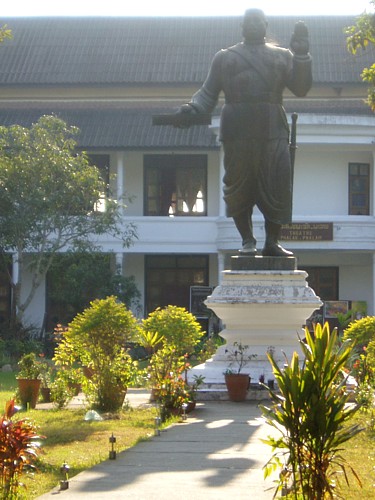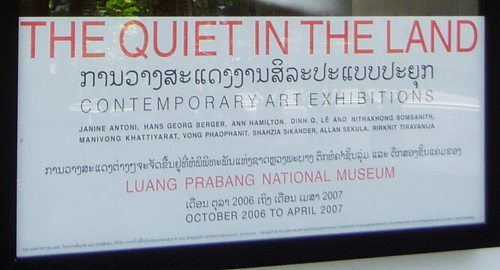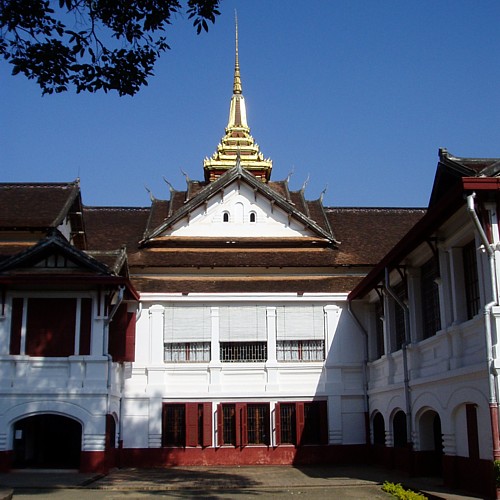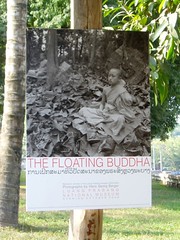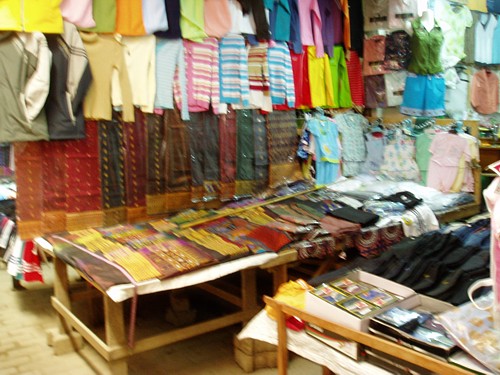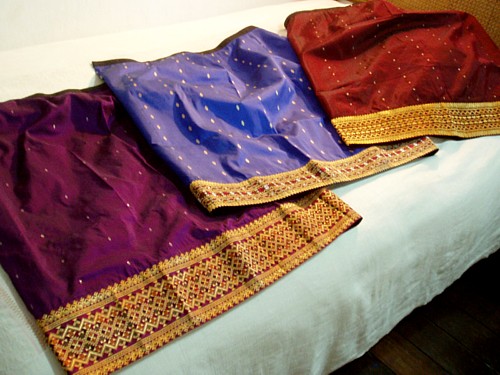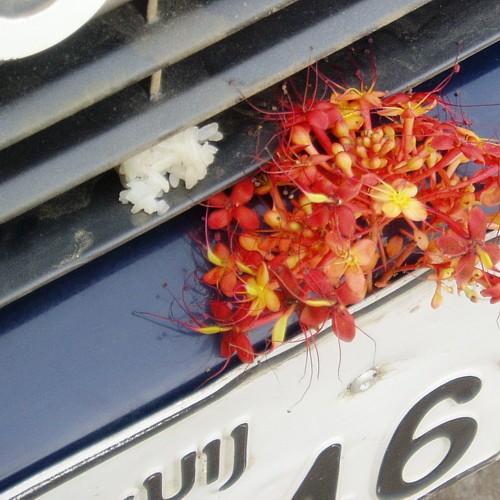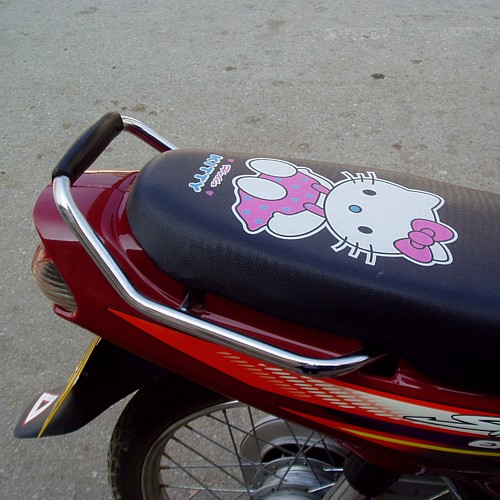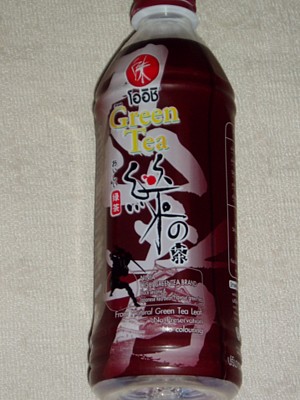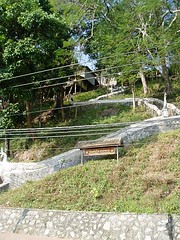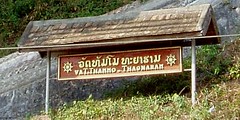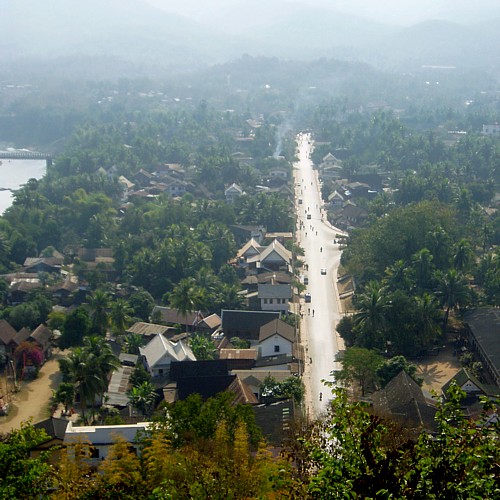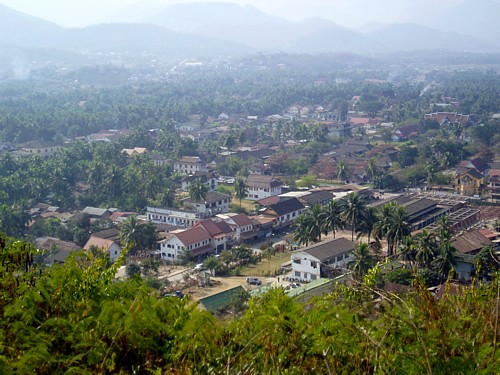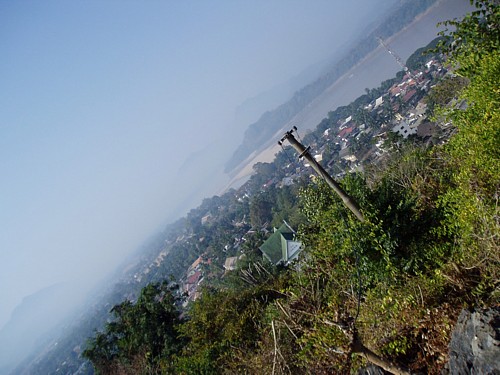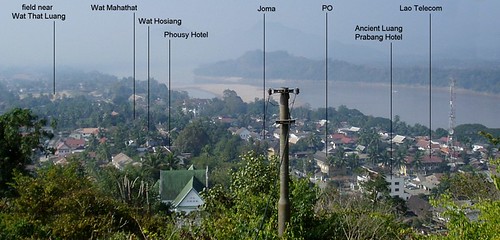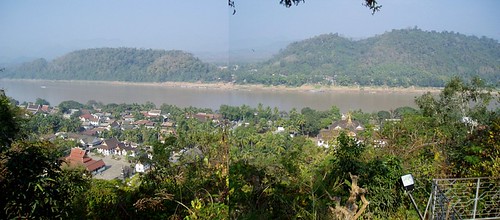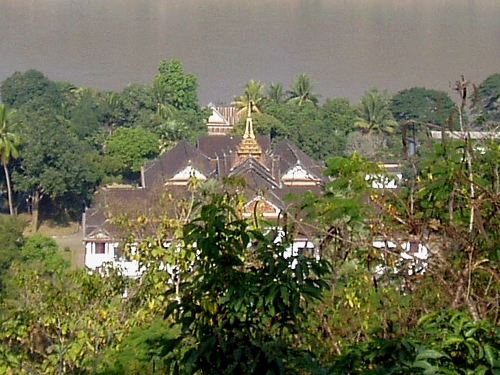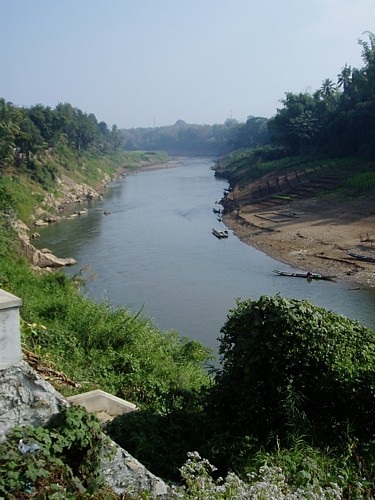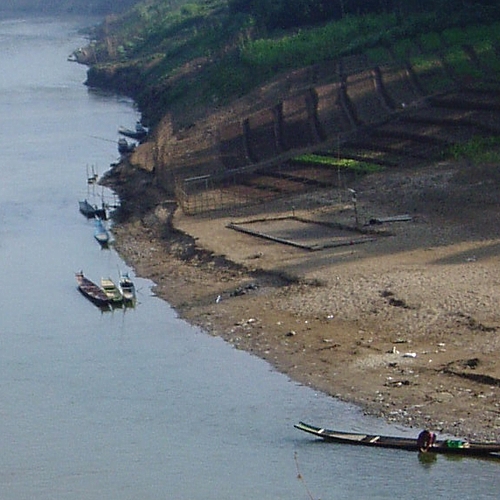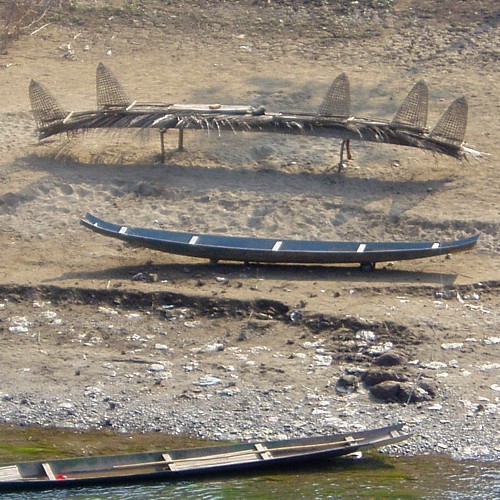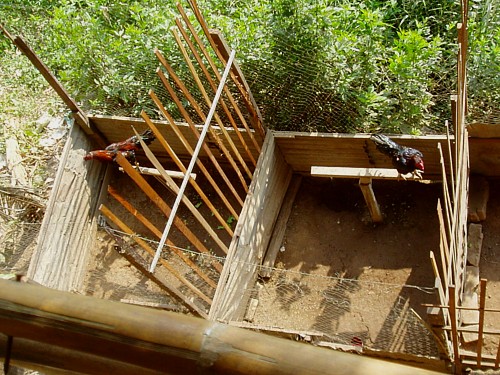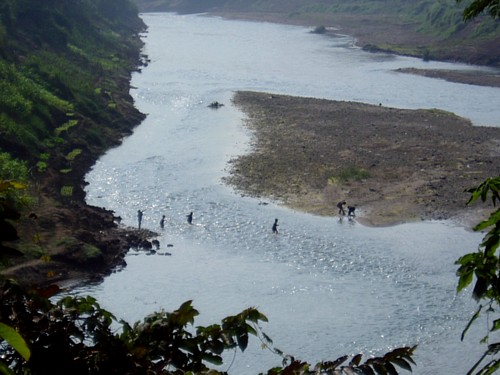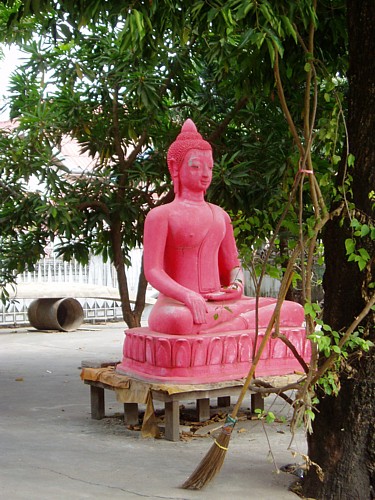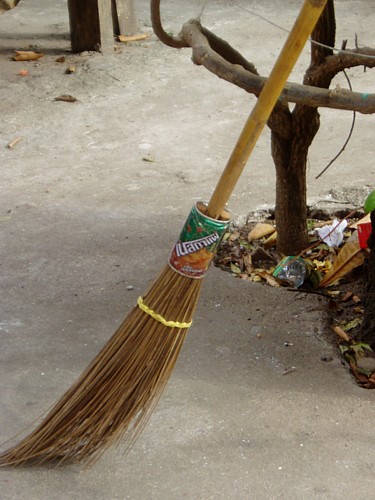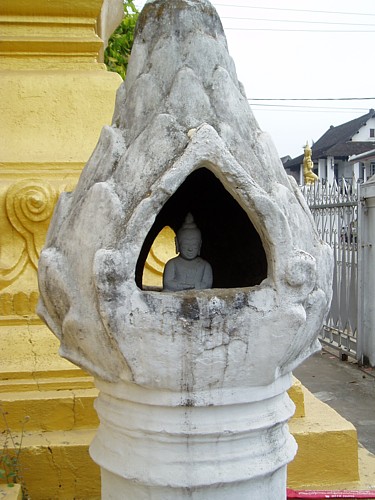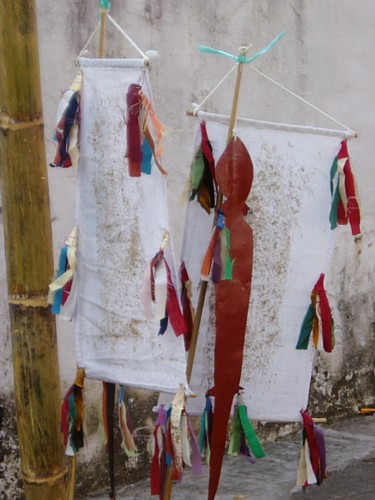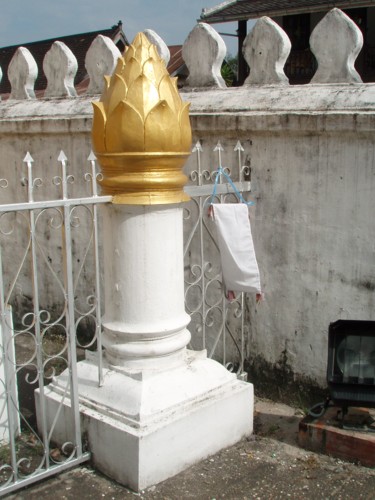The cat had never heard of that college before & had no idea where it was. Its Lao teachers didn't think it a good idea for the cat to go off on some strange guy's motorbike at night to what-might-turn-out-to-be-destination-unknown. Lao girls don't do that. Neither should Lao-looking non-Lao girls, in their opinion. Discussion ensued, during which the cat realised that they were rather clueless at reading maps & figuring out directions despite having covered 4-5 years worth of secondary & high school Geography classes. Things straightened out after the cat scratched out a rough map with a stick on a blank canvas of sandy ground. At the end of it they stuck fast to their pre-discussion decision that stocky novice & Monk Tata Young-fan would walk the cat to the college that evening. Forget Mr OD's motorbike.
All photos without humans taken during 2008 visit.
Lovanh College turned out to be a double-storeyed bungalow less than 3 blocks away in Ban Viengkeo:
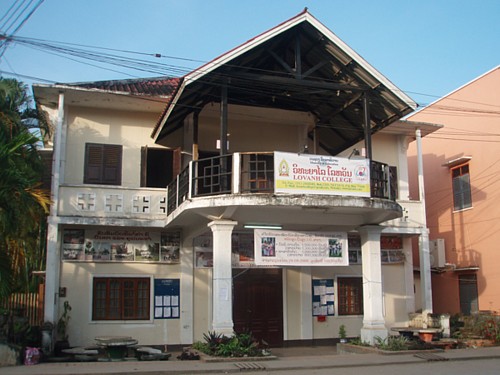
The college used to be located further away, but moved here when previous lease expired. Current location is a little too small, hence the additional classroom built at the back in the space that would usually serve as the outdoor kitchen area in Southeast Asian homes:
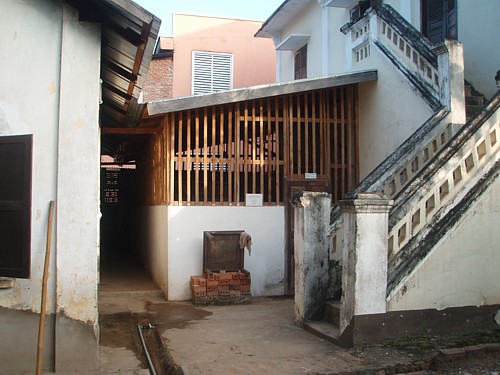
Which was the very classroom Mr OD's class was held in. This being an evening class, there were a few working adults in addition to the requisite novice monk (every college class in Luang Prabang seems to come equipped with at least one representative of the local sangha). As happens everywhere in schools that have a 'free seating policy', the front half of the class was occupied by the keener students...if the cat had its way, it'd start off such lessons by asking the front & back halves of the class to swop seats ;)
Souphanouvong University students appeared to make up the bulk of the class, many of whom were from other northern provinces & admitted under the quota system, whereby a certain percentage of university places are reserved for top-scoring high school graduates of every province. It comes with full tuition & board covered by the Lao government, & is aimed at levelling the playing field for students from more remote & less developed areas. The remainder of the university places are for competitive admission under the 'special system' for self-funding students, with separate entrance exams for every faculty. Sounds straightforward, but things are always way more complicated than meets the eye. Even in the supposedly meritocratic system that the cat is all too familiar with, there will always be the better-deserving who end up making way for the better-connected & better-off.
Among the Souphanouvong students were a few Business majors, a Maths major, & surprise surprise, English majors - what on earth were English majors from the local university doing in this class? Puzzled cat didn't probe further, but two years later it was to learn about some episode where the English majors were left with no lecturer for almost an entire semester after a Lao staff was dismissed by the South Koreans(*) for corruption...when a replacement was found, the students were made to cram an entire semester's worth of curriculum into the remaining one month of term...
Lao people are very shy...or so the cat has heard many more times than it can count on all four paws plus all whiskers. This went straight out of the window, or rather the gaps between the wooden slats (see above photo). The floor was thrown open & time flew by once Novice Phongsaly #2 got the ball rolling...& rolling & rolling - he spoke pretty well but had no pause/stop button! The difficulty was more of ensuring that everyone had a chance to speak & that the cheekier guys didn't reveal anything too scandalous (by Lao standards) about their female classmates under the pretext of practising their spoken English :P
All students were given the option of writing down anything they wanted to say & double-checking with Mr OD for any glaring bloopers - this way the usual excuses of keeping quiet for fear of blanking out mid-sentence or saying the wrong thing were naught. Those who resorted to this usually mustered enough confidence to speak/question off-the-cuff after one or two written sentences/questions.
Another strategy was to get them to speak on topics most familiar to them (family, village, aspects of everyday Lao life, etc), where it is difficult to come up with a 'wrong answer'. Those from Western(ised) societies are so accustomed to MAKING THEMSELVES HEARD without fear of reprisal, VOICING THEIR OPINIONS is second nature...whereas in Asian societies the further one sits down the hierarchy the more one should be seen but not heard & the more suicidal it can be to say the wrong thing *cue dead silence followed by nervous laughter*...perhaps this is one reason why the 'model answer' country where the cat comes from is sorely lacking in the truly articulate who can distill insightful thought into succint word?
Hard to get everyone in even with the photographer's back against the wall:
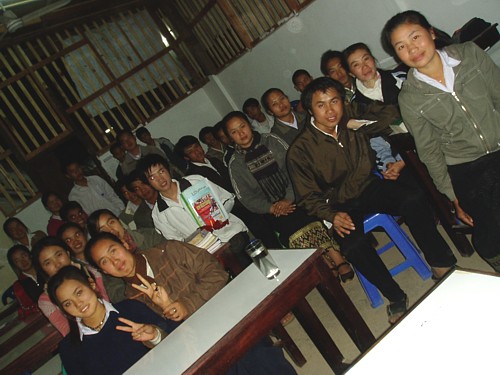
Glass of water in foreground was served to the cat. But they made the cat laugh so much it couldn't drink.
Most enthusiastic were the 'quota students' from Houa Phanh & Phongsaly, who also had the dustiest feet - after class they walked back in near darkness to their university dorms. Mr Excuse Me doing the usual textbook advert pose with his holey red gloves:
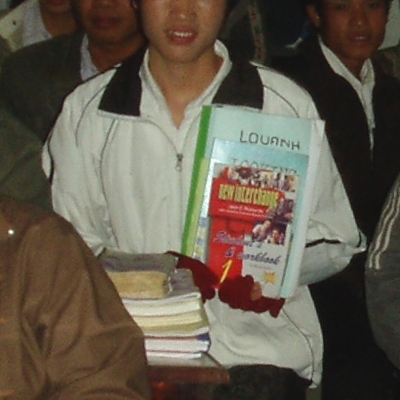
Once upon a time, this 'quota student' was given the impression that the polite way to begin any sentence in English was with the words 'Excuse me (please)'. The largest book (with green spine) held by him is a typical Lao college textbook - 100% photocopied on A4 paper & stapled together or soft-bound. One of the cat's Lao consultants uses a stack of such 10,000kip texts for Law school at NUOL. Earlier this morning, the cat had seen the red New Interchange textbook for sale at Talat Phousi.
to be continued...
* The construction of the new Souphanouvong campus was funded by South Korea; Lao academics were also brought over to Korean universities for training & Korean staff sent over to Luang Prabang to get things up & running.


